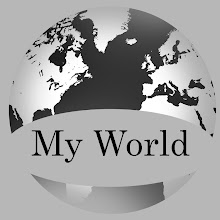Axel van Lamsweerde, Member, IEEE, and Emmanuel Letier
Abstract
Requirements engineering is concerned with the elicitation of high-level goals to be achieved by the envisioned system, the refinement of such goals and their operationalization into specifications of services and constraints and the assignment of responsibilities for the resulting requirements to agents such as humans, devices, and software. Requirements engineering processes often result in goals, requirements, and assumptions about agent behavior that are too ideal; some of them are likely not to be satisfied from time to time in the running system due to unexpected agent behavior. The lack of anticipation of exceptional behaviors results in unrealistic, unachievable, and/or incomplete requirements. As a consequence, the software developed from those requirements will not be robust enough and will inevitably result in poor performance or failures, sometimes with critical consequences on the environment. This paper presents formal techniques for reasoning about obstacles to the satisfaction of goals, requirements, and assumptions elaborated in the requirements engineering process. A first set of techniques allows obstacles to be generated systematically from goal formulations and domain properties. A second set of techniques allows resolutions to be generated once the obstacles have been identified thereby. Our techniques are based on a temporal logic formalization of goals and domain properties; they are integrated into an existing method for goal-oriented requirements elaboration with the aim of deriving more realistic, complete, and robust requirements specifications. A key principle in this paper is to handle exceptions at requirements engineering time and at the goal level, so that more freedom is left for resolving them in a satisfactory way. The various techniques proposed are illustrated and assessed in the context of a real safety-critical system.
Requirements engineering is concerned with the elicitation of high-level goals to be achieved by the envisioned system, the refinement of such goals and their operationalization into specifications of services and constraints and the assignment of responsibilities for the resulting requirements to agents such as humans, devices, and software. Requirements engineering processes often result in goals, requirements, and assumptions about agent behavior that are too ideal; some of them are likely not to be satisfied from time to time in the running system due to unexpected agent behavior. The lack of anticipation of exceptional behaviors results in unrealistic, unachievable, and/or incomplete requirements. As a consequence, the software developed from those requirements will not be robust enough and will inevitably result in poor performance or failures, sometimes with critical consequences on the environment. This paper presents formal techniques for reasoning about obstacles to the satisfaction of goals, requirements, and assumptions elaborated in the requirements engineering process. A first set of techniques allows obstacles to be generated systematically from goal formulations and domain properties. A second set of techniques allows resolutions to be generated once the obstacles have been identified thereby. Our techniques are based on a temporal logic formalization of goals and domain properties; they are integrated into an existing method for goal-oriented requirements elaboration with the aim of deriving more realistic, complete, and robust requirements specifications. A key principle in this paper is to handle exceptions at requirements engineering time and at the goal level, so that more freedom is left for resolving them in a satisfactory way. The various techniques proposed are illustrated and assessed in the context of a real safety-critical system.
Index Terms-Goal-oriented requirements engineering, high-level exception handling, obstacle-based requirements transformation, defensive requirements specification, specification refinement, lightweight formal methods.









0 komentar:
Post a Comment